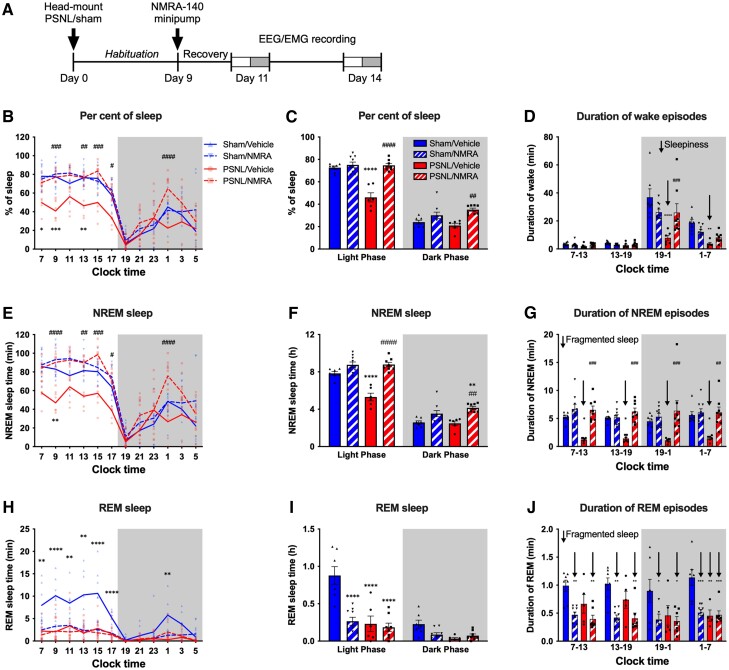Figure 5.
KOR antagonist NMRA-140 restores sleep in mice with PSNL. (A) Experimental timeline: mice were given PSNL or sham surgery and were instrumented with EEG/EMG head mounts. After habituation, on Day 9, mice were implanted with osmotic minipumps delivering NMRA-140 or vehicle and sleep was assessed on Days 11 and 14 after PSNL/sham surgery. Day 11 recordings are shown in this figure, for Day 14 data see Supplementary Figure 5. (B) Per cent of sleep time in 2-h bins is shown for NMRA-140 or vehicle treated mice at 11 days after PSNL or sham surgery. (C) Summary of total sleep data in light and dark phases. (D) Average duration of wake episodes during the 6-h early/late light and early/late dark phases. ‘Daytime sleepiness’ is indicated by down arrows. (E and F) NREM sleep time in 2-h bins (E) and during light and dark phases (F). (G) Average duration of NREM episodes during the 6-h early/late light and dark phases; fragmented sleep is indicated by down arrows. (H and I) REM sleep time in 2-h bins (H) and in the light and dark phases (I). (J) Average duration of REM sleep episodes during the 6-h early/late light and dark phases. Fragmented sleep is indicated by down arrows. Data values for individual mice are shown as small symbols; lines represent the group means; bars represent the means ± SEM; n = 6 for sham/vehicle; n = 8 for sham/NMRA; n = 7 for PSNL/vehicle and n = 9 for PSNL/NMRA groups. *P < 0.05; **P < 0.01; ***P < 0.0001; ****P < 0.00001; two-way repeated measures ANOVA with Bonferroni post hoc test. Detailed statistics in Supplementary Table 1.

